The Most Aggressively Full Tang Finnish Hunting Knife is Also Their Weirdest Looking
It feels rude to say Marttiini is the better looking but lesser known Mora alternative, but that’s how it’s been for a while. At least, it was until the YouTubers discovered them.
Also until now, Marttiini has mostly made half to three-quarter tang fixed blades at a budget price point that can outperform most other fixed blades on the market at most tasks you should be doing with a survival knife.
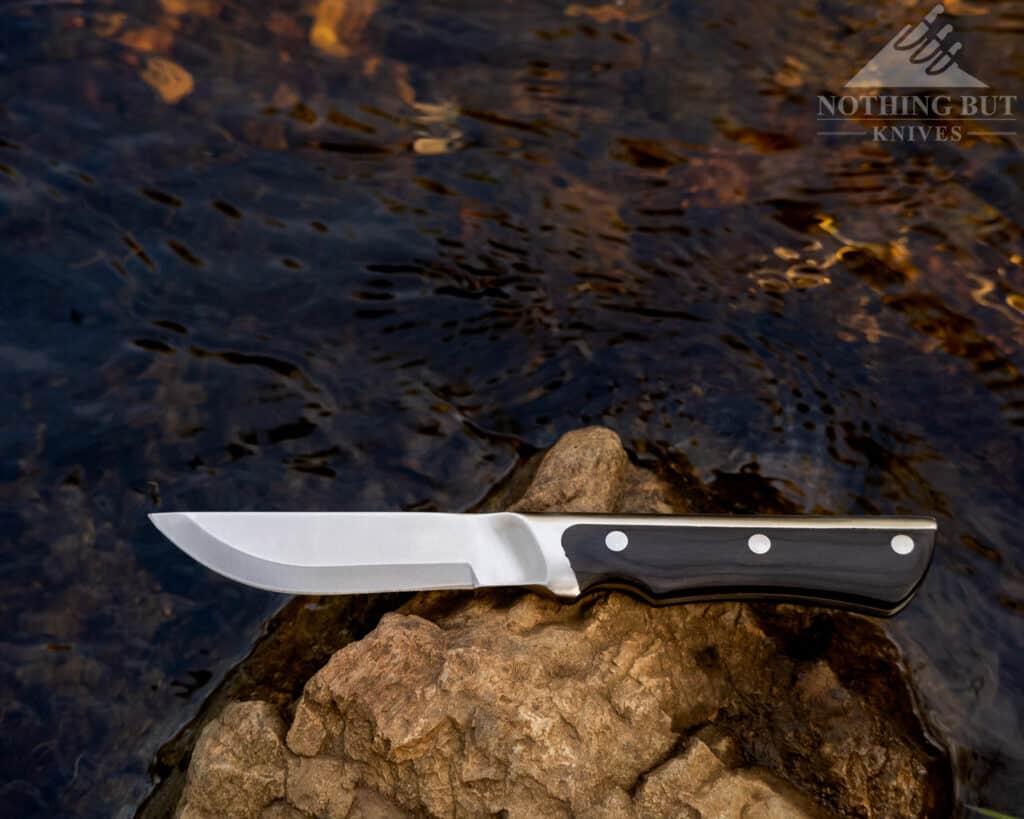
This knife (if you couldn’t tell by the name) is Marttiini’s full tang fixed blade: a thick-spined, branch-cracking beast of a thing that is so full tang the steel spills over the back of the handle because it will not be contained by two mere slabs of wood, nor will it leave its home with any name that doesn’t profoundly affirm its status as a full tang fixed blade in this world.
It’s a chopper and a skinner and an all around beater blade that’s comfortable in the hand and on the belt. And if you can’t find something to use it for at the campsite, it’s because you aren’t camping right.
2022 Update: Marttiini has discontinued this knife, but before you panic, they started making another full-tang survival knife called the Tundra. Still a shame, though, because this particular full-tang Marttiini was one of the more original knives I’d seen in a while.
Specifications
| Overall Length: | 9.8” |
| Blade Length: | 4.3” |
| Blade Steel: | Something stainless something something |
| Construction: | Full tang (Obviously) |
| Blade Thickness: | 0.14” |
| Blade Shape: | Standard |
| Blade Grind: | Scandi |
| Handle Length: | 5.75” |
| Handle Material: | Pakkawood and Stainless steel |
| Weight: | 8.24 oz |
| Made in: | Finland |
Pros
| Tough blade that excels at most survival tasks |
| Comfortable handle with great balance |
| Nice sheath that feels good for hiking and drawing |
| Looks pretty original as far hunting knives go |
Cons
| The fit and finish are a little rough |
| The steel is tough but soft |
| Hard to get sparks on a fire steel |
The Looks and the Name
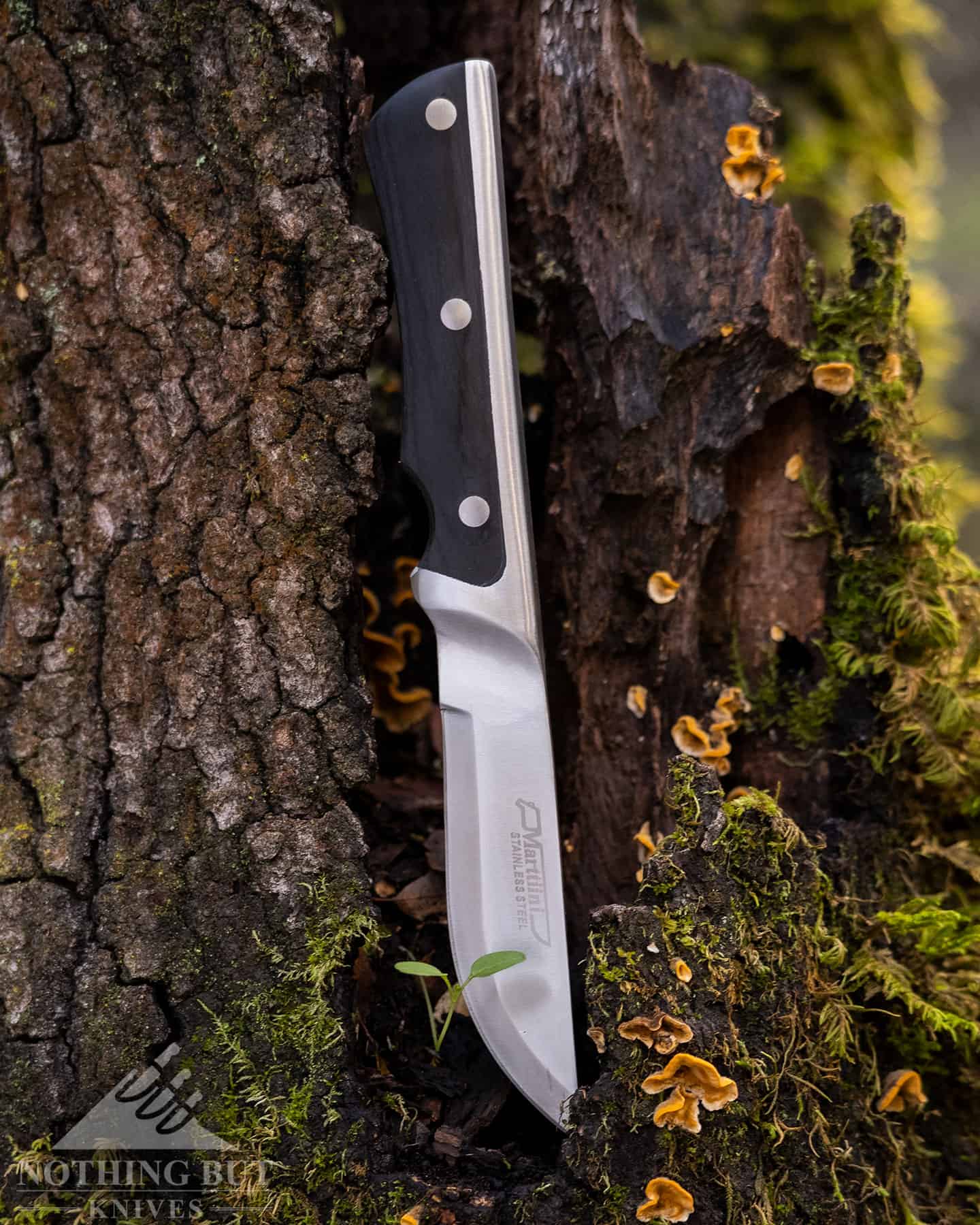
Something like this really deserves to be praised for its wealth of function, but I have to address the cosmetics on this thing first.
This knife really is called “the Marttiini Full Tang”. On some level I respect the gumption of that name. It has the feeling of an old man who doesn’t have time for stupid things like clever names, and wants you to get out of his shop before you try talking to him about your feelings.
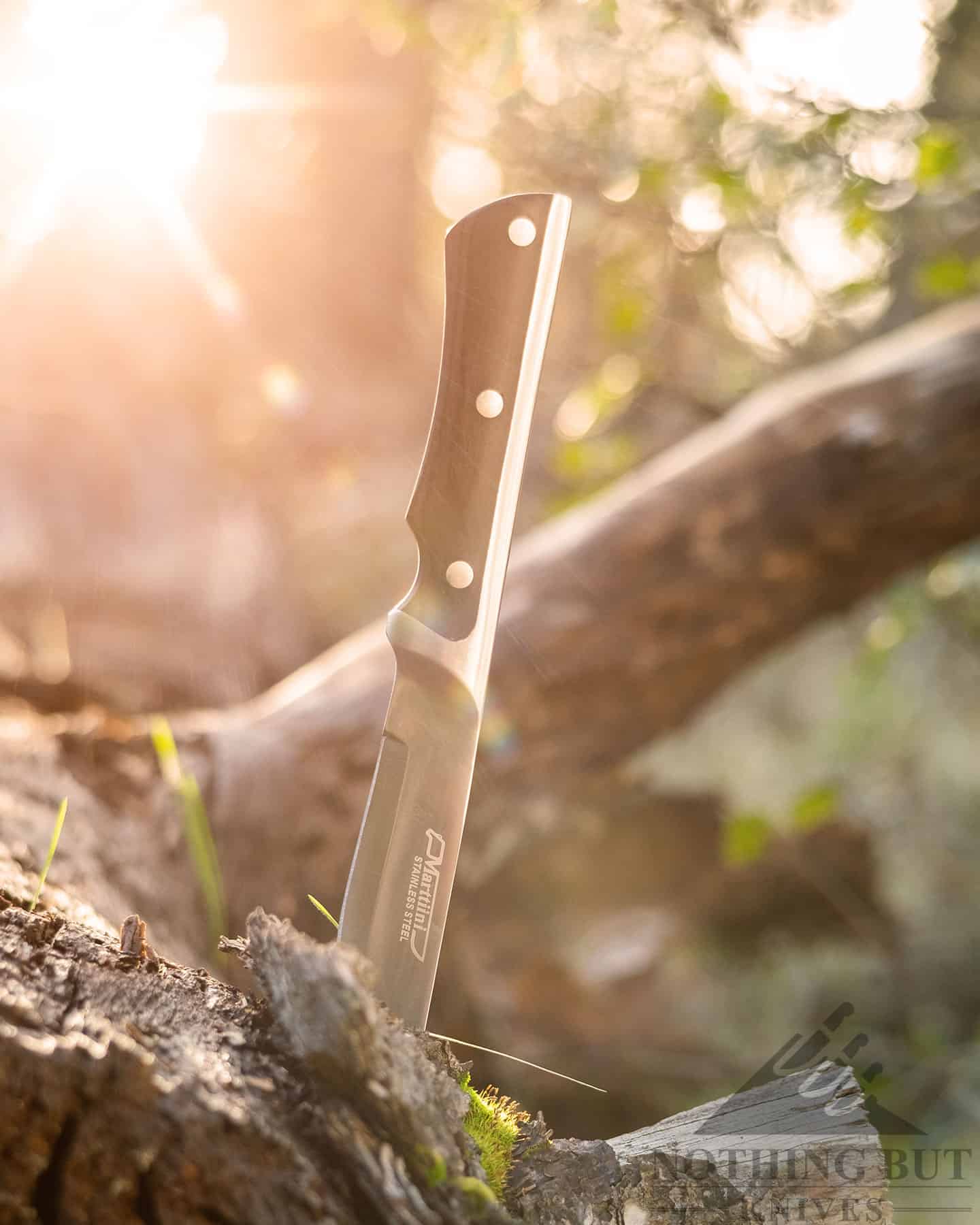
I’m willing to accept that Marttiini was too busy making the Full Tang knife performed well to try to make it sound good, because they really did make a great design for bushcraft, hunting, and survival.
But it’s like if a blacksmith made a magic sword and tossed it to the hero saying “Here. This sword will never go dull, and when you stab dragons with it they explode.”
“That’s great. What is its name?”
“The Very Sharp Sword.”
“…”
“It’s also good for skinning reindeer.”
It doesn’t look like a magic sword, though. At some angles it looks like a tough-as-nails hunting knife with a clever distribution of steel. At other angles it looks like a butter knife.
So all around this is a whirlwind of impressions that alternate between interest and bemusement.
At least until you use it.
The Blade
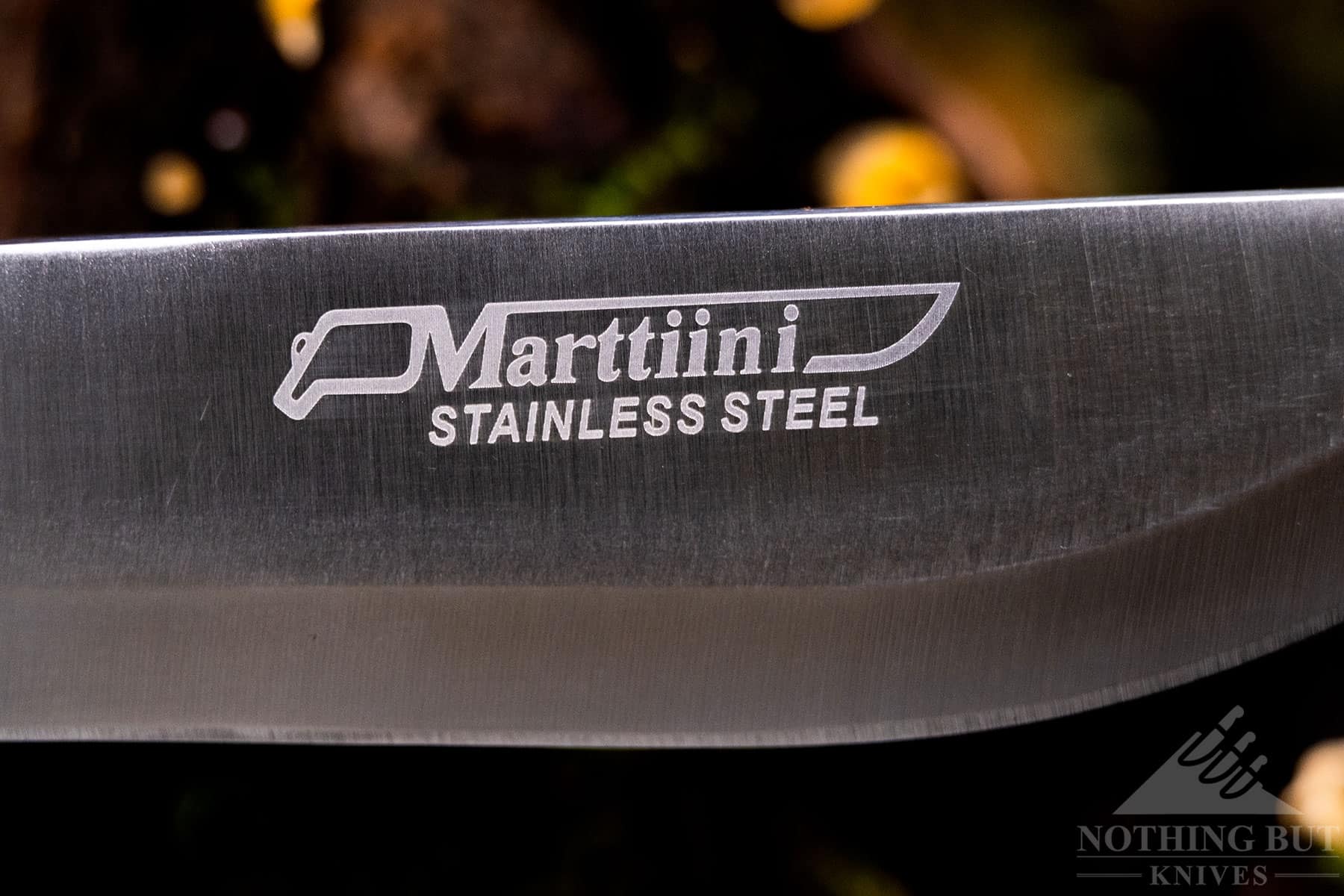
This is how a camping knife should perform.
It’s great at chopping, the handle is thick and sturdy enough to hammer in tent stakes, it can make feather sticks better than most of the knives we’ve tested, and it even has a decent edge most of the time.
Bear in mind, though, that it’s not the kind of knife that comes, or is meant to be, razor sharp. It’s meant to be easy to sharpen. It’s going to dull pretty quickly with heavy use, but most anything flat and hard can touch up the edge, and when you have the time and resources to sharpen properly it will take a super sharp edge without much effort.
If you’re used to the super Crucible and Bohler steels that keep coming out, this is going to be a big switch in the other direction. But if you’ve been using Moras and Swiss Army Knives all your life, this should feel pretty familiar.
Marttiini’s Mystery Steel
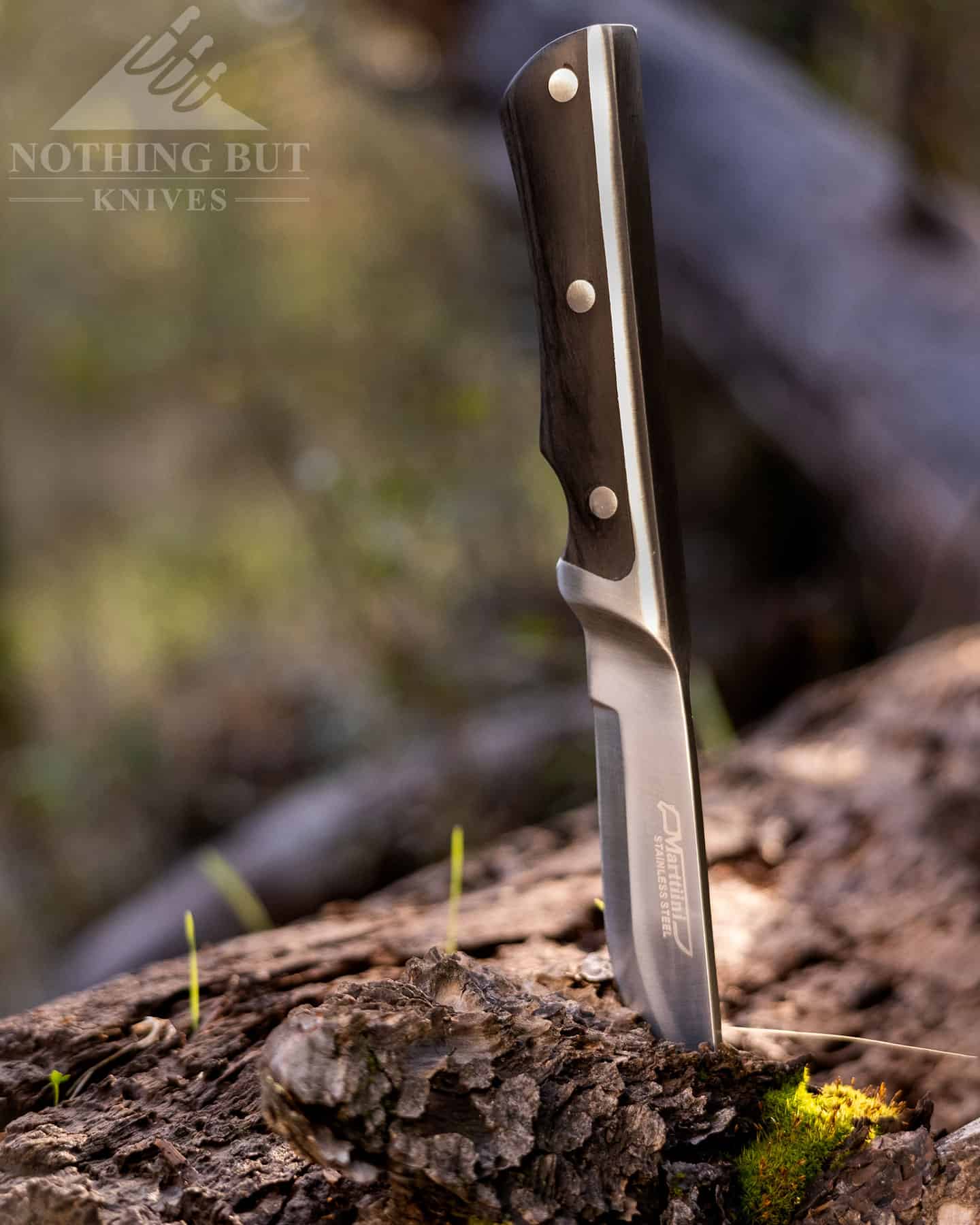
Marttiini has always gone with the concerning strategy to refer to most of the steel they use simply as “stainless steel”, or, even worse, “stainless chrome steel”. Both of which give the impression that they’re just using the cheapest slag China has to offer.
Supposedly they’re sourcing they’re steel from French and German manufacturers. At least one of their steel sources is the French company Bonpertuis, which also happens to provide steel to Victorinox. So it’s fair to assume that a lot of Marttiini’s steels will operate in the same range as their Swedish cousin.
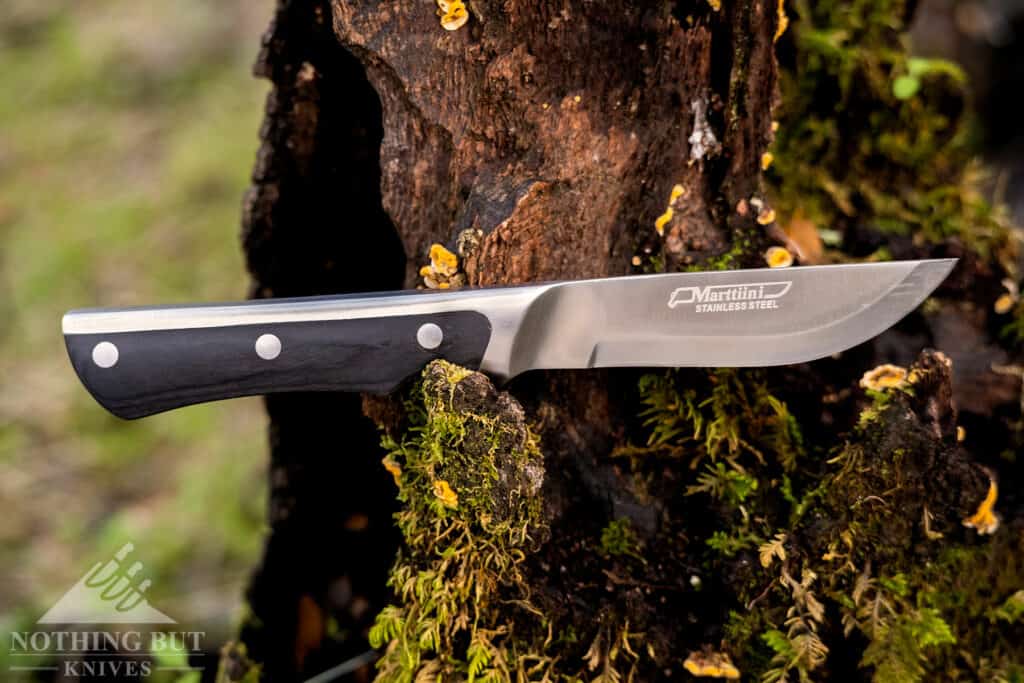
Going off Marttiini’s Materials page, the stainless chrome steel in the Full Tang knife is 13% chromium and hardened to around 53-54 HRC, so this is very soft steel from a partially mysterious source, but no one who understands the kinds of knives Marttiini makes has had a problem with their performance as far as I know. These are tough knives that can survive frozen tundras and dense jungles. You’re supposed to be able to sharpen them on a rock after field dressing a bear. Or possibly a range of other things less extreme.
My personal experience with it is that it didn’t cut paper very well after I spent a day chopping wood, making feather sticks, dropping it on the ground, and starting fires. But it did all things well even as it was getting duller, and at the end of the day I managed to fix the edge up a little bit on a glass of water. If that’s not rugged versatility, I don’t know what is.
The Handle
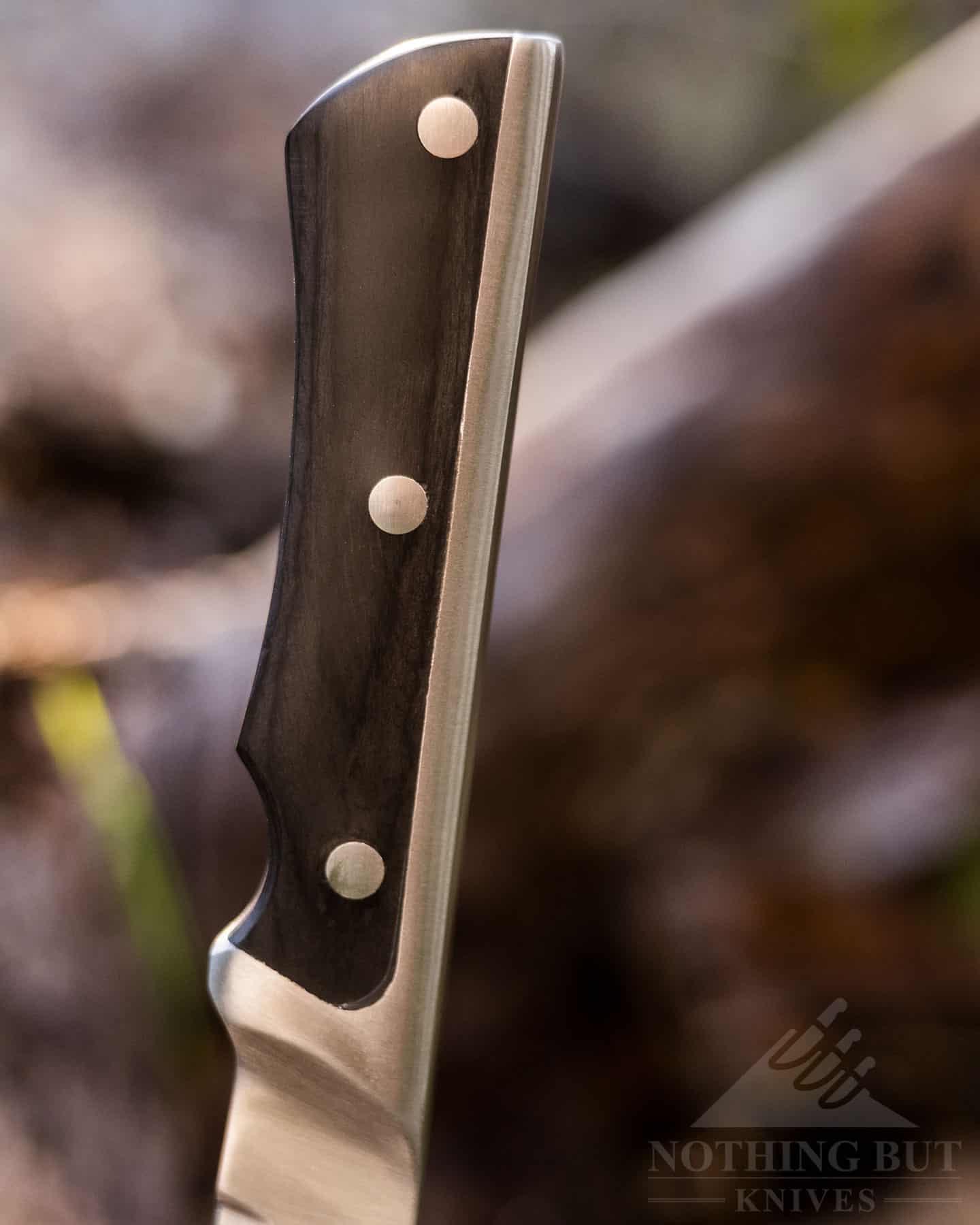
Every angle of the handle is comfortable. It’s well rounded but has a good oval shape that keeps it from turning in the hand.
At first I thought the ricasso on this was way too big, but I found myself using it all the time. Marttiini put it there so people could choke up on the blade for skinning, but I’ve ended up wrapping a finger around it for everything from feathersticking to cutting an apple.
I was worried that the all-steel back of the handle would make it slippery, but I haven’t had any trouble keeping a grip on it so far. That’s probably in part because of the overall shape of the handle, and probably in part thanks to the finger groove, which I would otherwise not be a fan of.
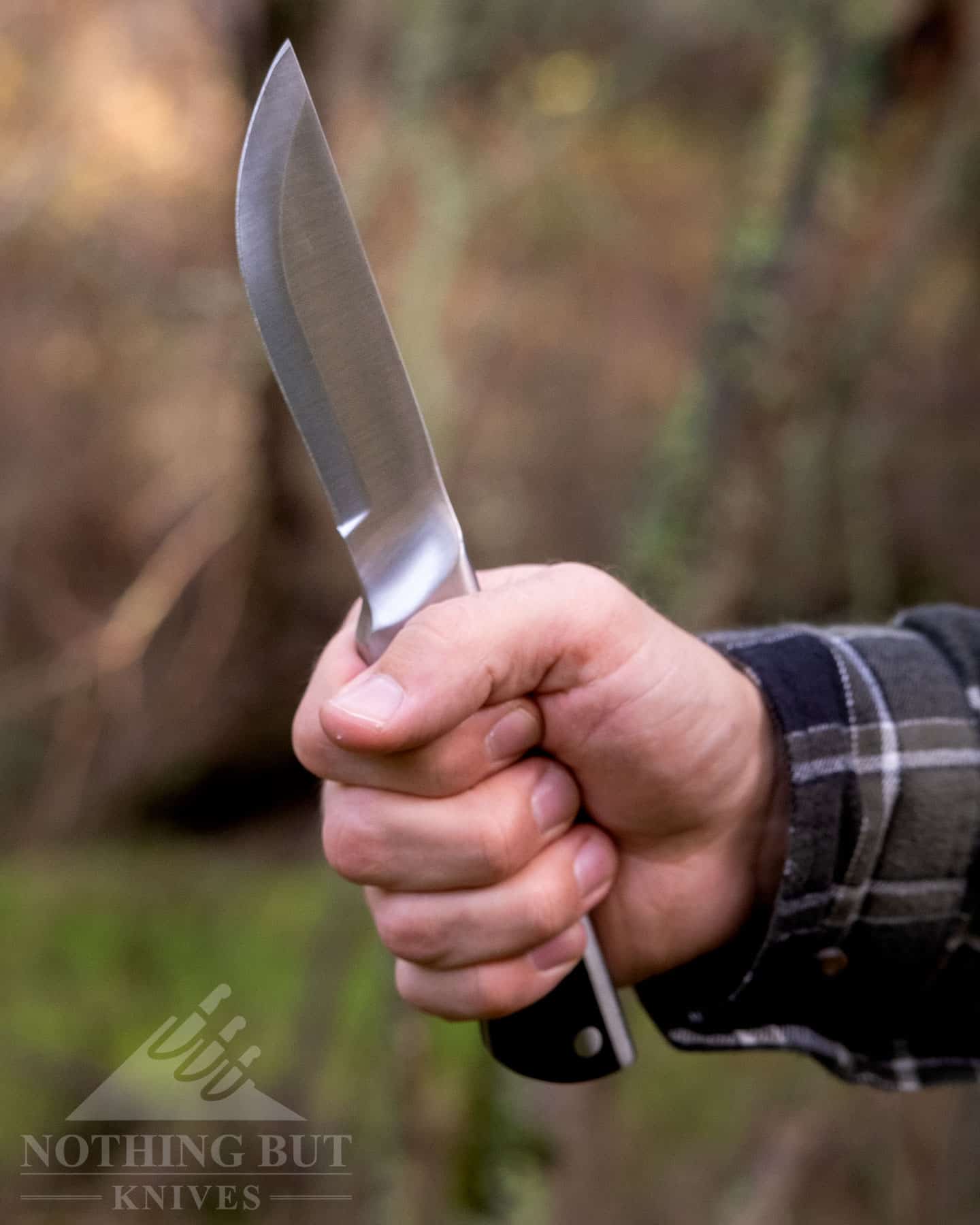
I have noticed that in a full gorilla grip that top groove starts to feel like a little bit of an intrusion between my index and middle finger. Not enough to compromise my grip, but enough to feel weird. If they had just ground that sharp angle beneath the finger groove on the handle, it would feel a lot more natural for me. Otherwise, it’s not a huge problem with the design. It’s just further validation for my opinion that knife makers need to stop making these indents so deep.
Following along this thread of minor criticism, the handle is one of the couple of areas on this knife where the fit and finish starts to look kind of sketchy. The transition from wood to steel is far from seamless. I can feel a pretty prominent lip when I run my thumb over it, and there are grind marks and even small chips around the border of the wood. My best guess is those are from whatever they were using to hammer the pins in at the Marttiini factory.
Or maybe someone at the post office just dropped this one on the floor. The point is, this knife came out of the box a little rough around the edges.
But then this is meant to be a rough knife.
The Sheath
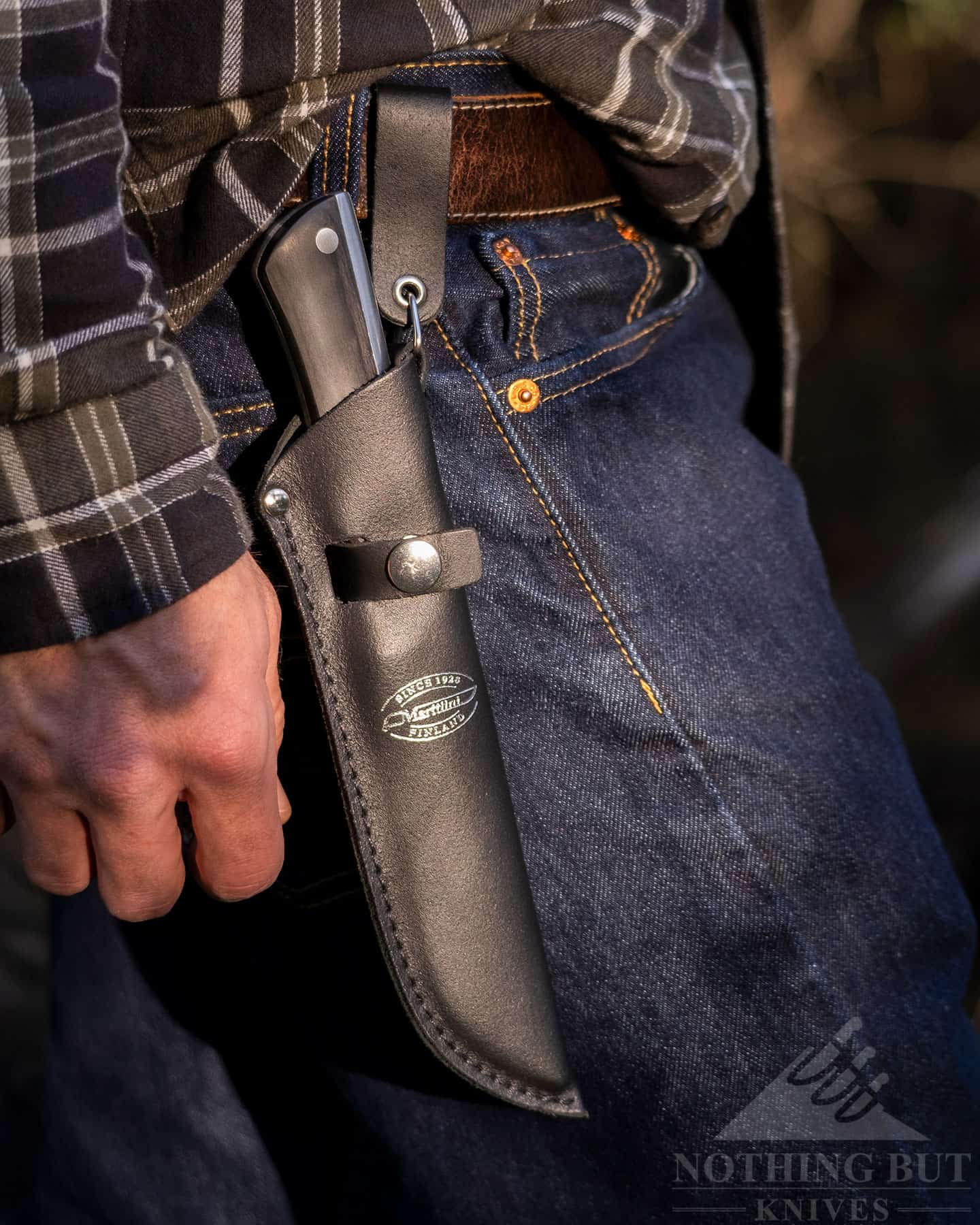
This has just about sold me on dangling sheaths. I’m opposed to them as a rule, but somehow this one didn’t bother me too much.
Since it hangs angled a little backward it’s easier to draw, and the full hanging length is pretty short so it doesn’t get tangled up in my legs or anything else I might be carrying on my belt.
I would still like the option to carry it tight to my belt, though.
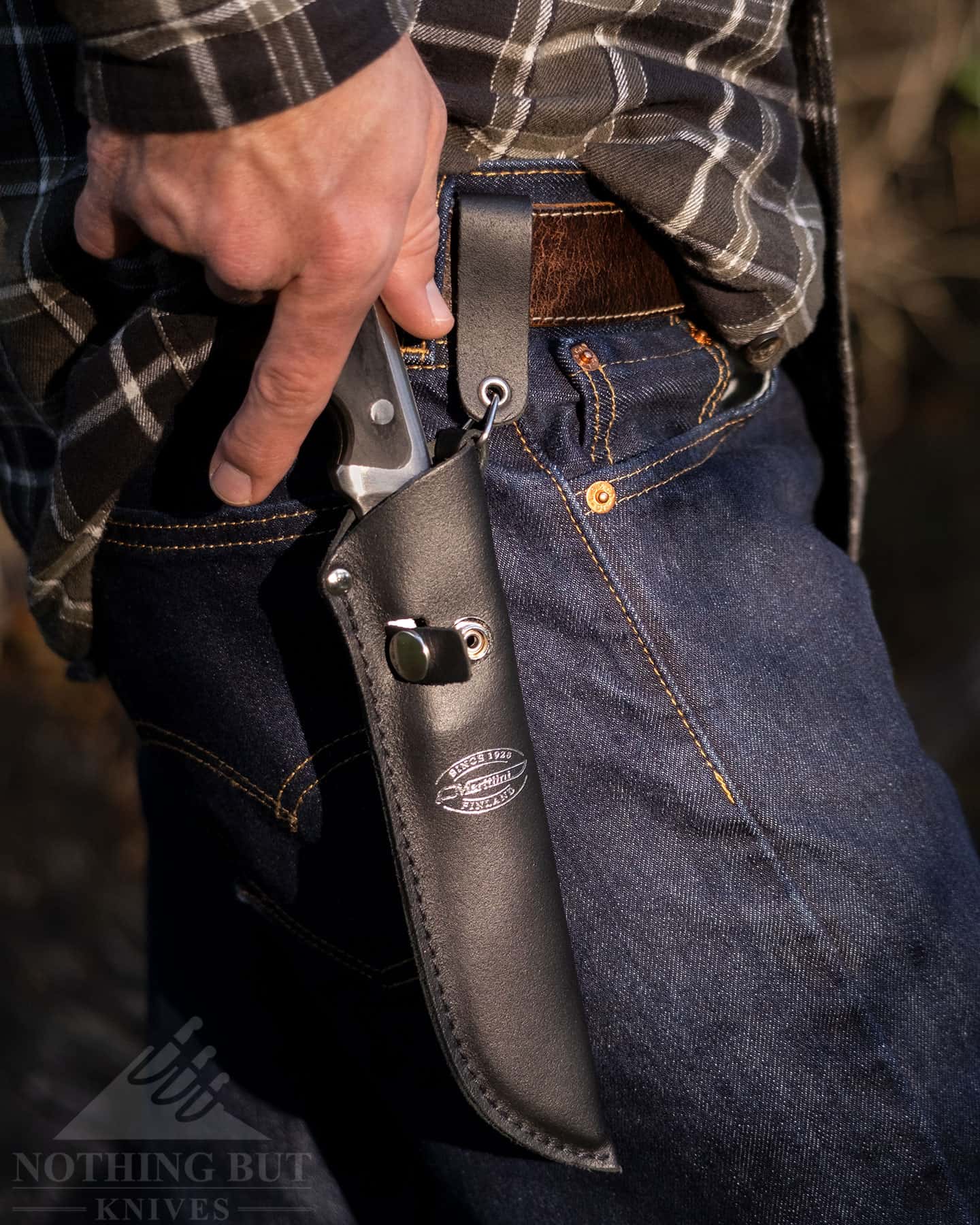
This sheath also has a fantastic innovation that solves the button strap problem that I’ve had with a lot of fixed blade knives over the years (especially older Buck knives). Since the strap on this is always threaded through holes in the sheath, it’s always kept in exactly the spot it needs to be. I don’t need to push it out of the way with my finger to get the knife back in, and I don’t need to search around for it by feel to snap it closed.
I’ve probably had an easier time deploying and sheathing this knife than pretty much any fixed blade (survival or tactical) that I’ve reviewed.
Fun with Wood
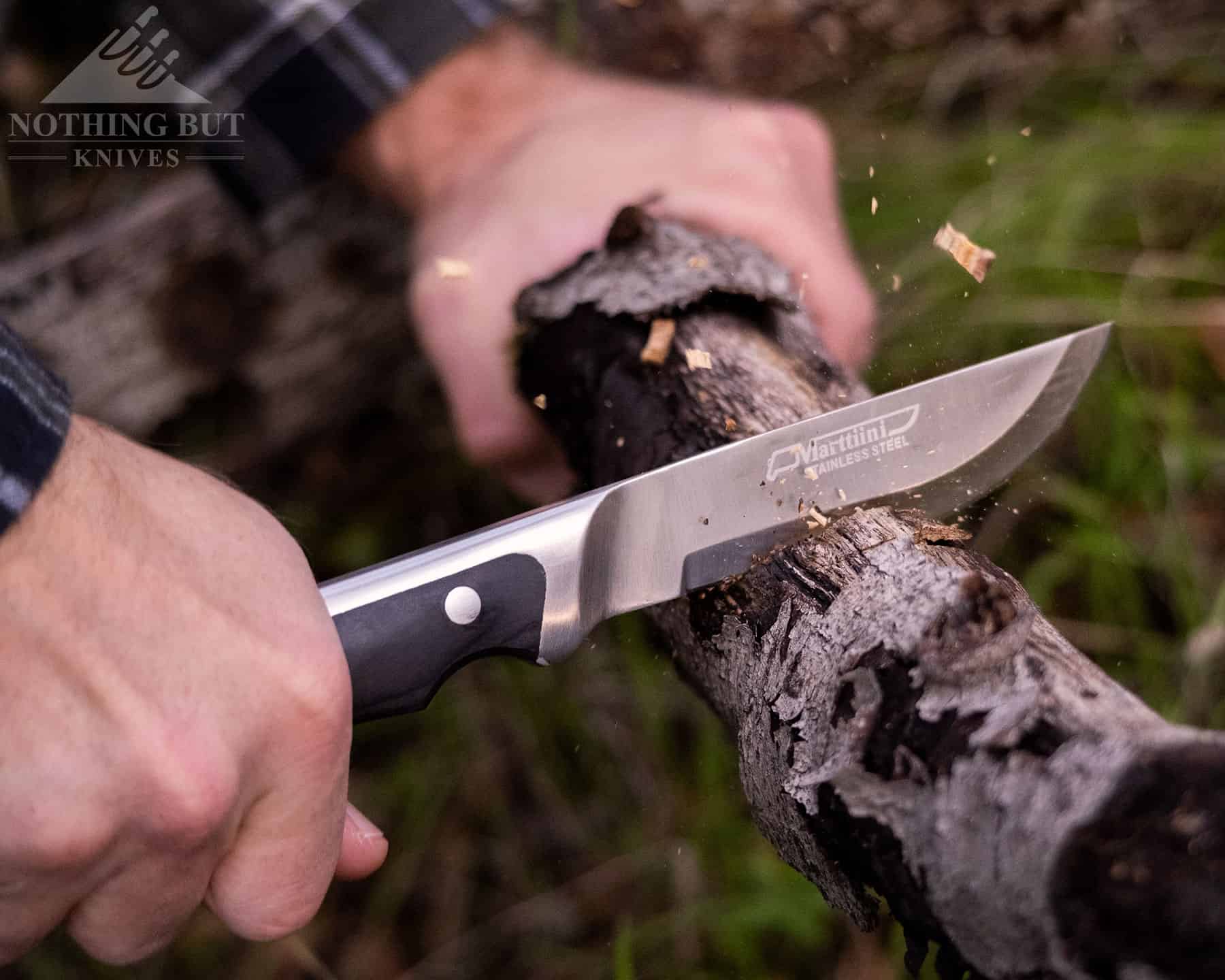
I had a grand time chopping with this. The balance helps to keep my swings accurate, and the scandi grind has a tendency to take chunks when it hits something. It also didn’t irritate my hand much thanks to the handle being so smooth.
The smooth handle will also start slipping a bit after a while, but I’ve come to realize this is the kind of compromise you have to make for survival knives.
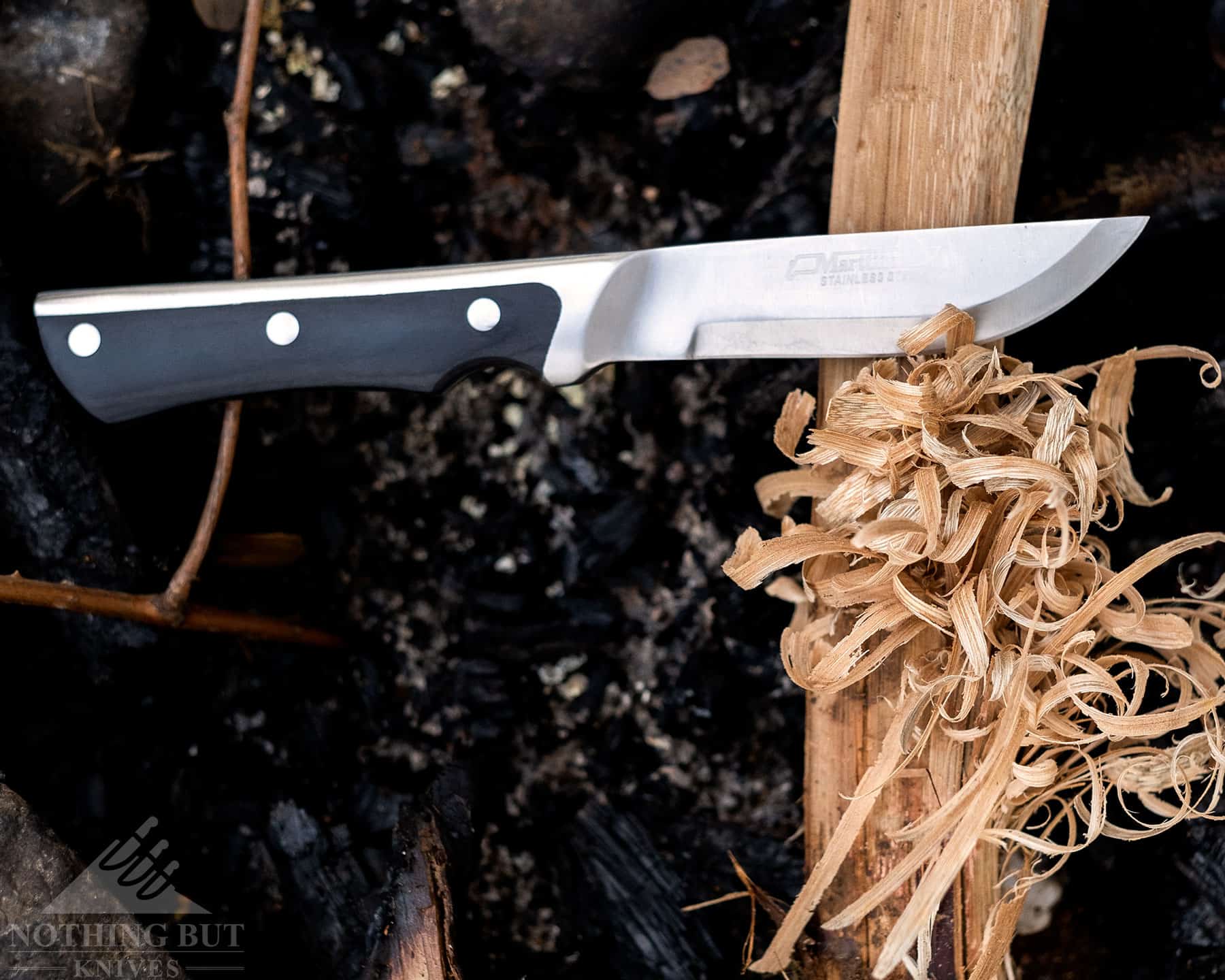
I had the same issue with the Civivi Kepler, and the designer of that told me in no uncertain terms that he prefers his fixed blades to have smooth handles because they don’t grate on the skin as much during heavy use.
For the Marttiini Full Tang’s part, the finger groove and the swell at the bottom at least do a good job of creating enough material to keep the knife from flying out of my hand.
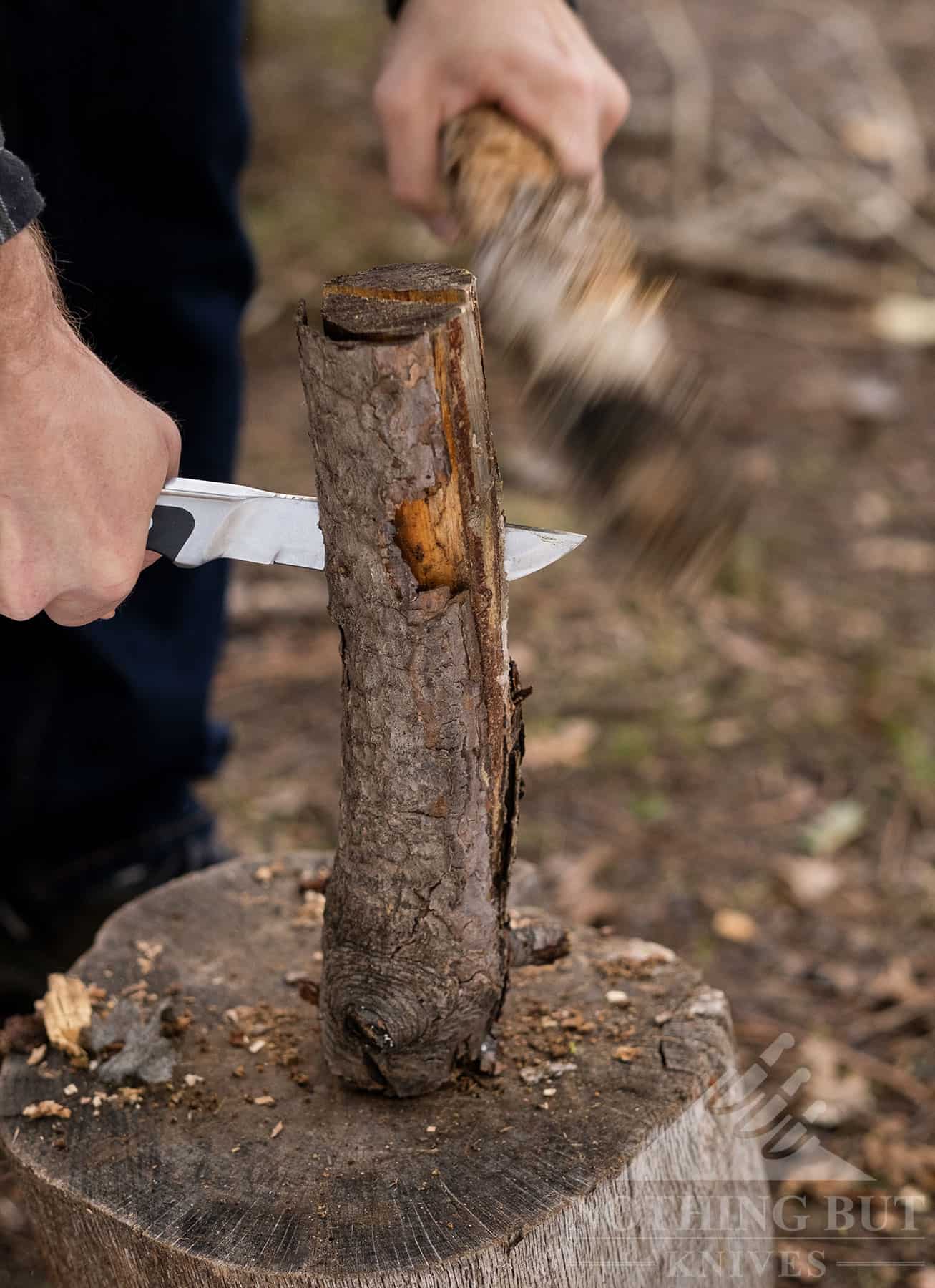
I had a bit of trouble batoning with this at first, because the piece I picked up was full of knots at the bottom, and probably too big to baton anyway. I did manage to split the wood, though, and once I had it down to proper sizes batoning got a lot quicker. The Full Tang can make a decent pile of kindling in no time so long as you’re working with a smooth half or quarter round log.
Less Fun with Fire
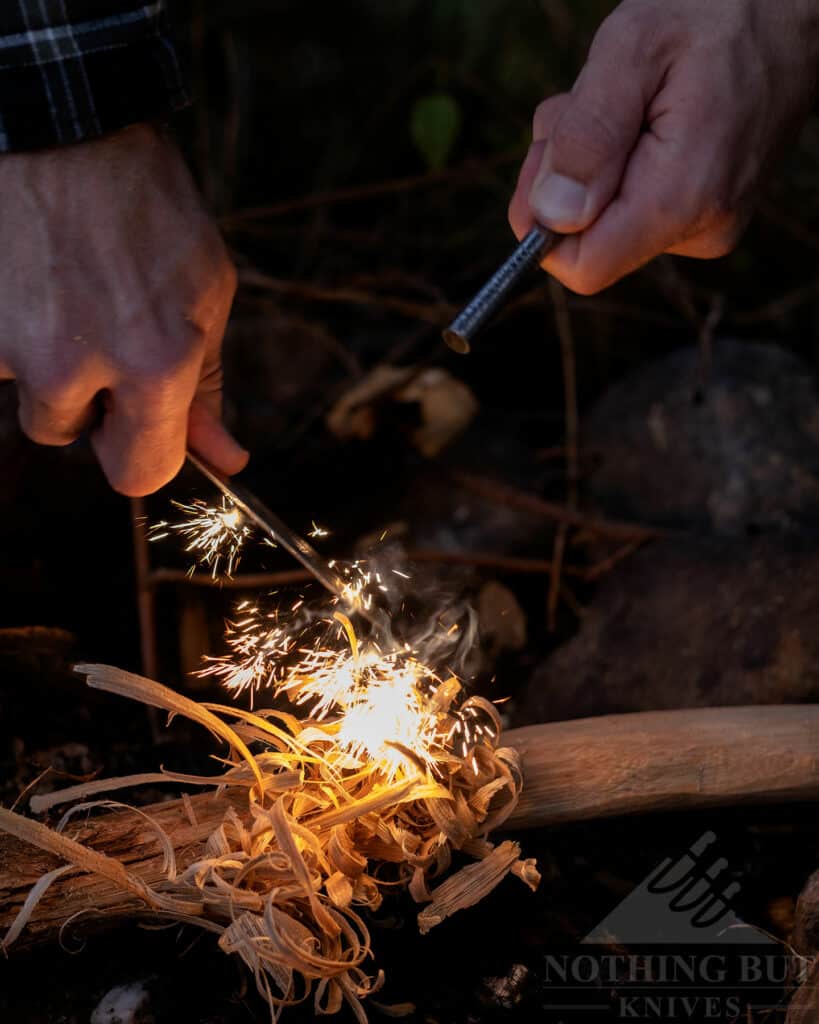
Getting this to spark off a ferro rod is a little tougher. The spine isn’t a perfect 90 degrees, but it’s not so rounded that it’s impossible. It just takes a little extra pressure.
I had the best luck using the higher end of the spine. It feels a little sharper up there, and the increased leverage helps add the amount of pressure needed to get anything hot going off it.
I got it sparking enough to start a fire… eventually. It’s not going to be an ideal fire starter without a little bit of grinding on the spine, though.
Comparison and Alternatives
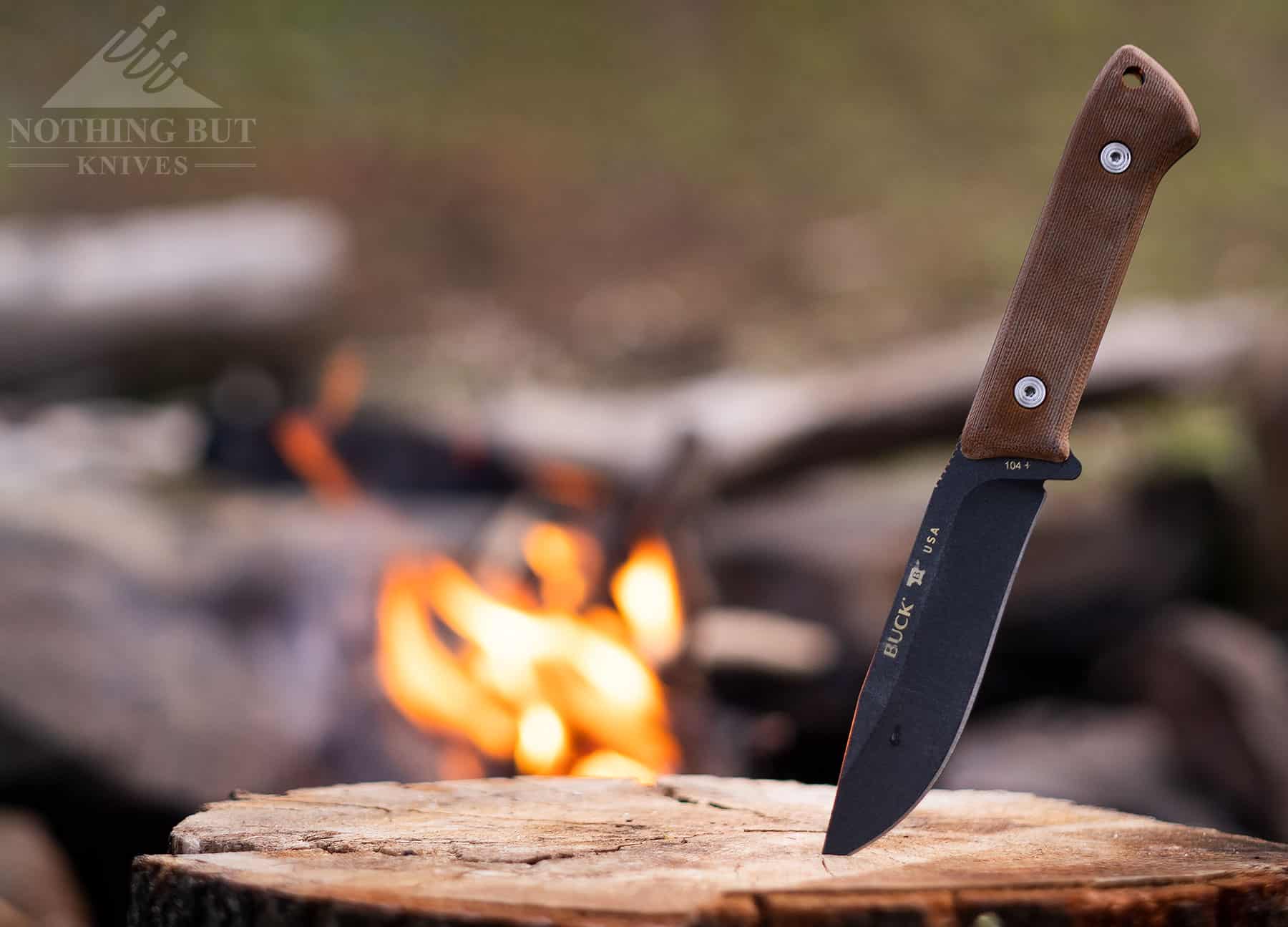
If you’re just skinning, making feather sticks, and starting campfires, the Buck Compadre is worth looking at. It’s a lot sharper, although you can’t choke up on it like the Marttiini Full Tang, and I wouldn’t want to subject the thin hollow grind to chopping or batoning. The Compadre also has the benefit of a non-dangling sheath, but maybe that’s not such a big advantage where this Marttiini is concerned.
You can choke up on the Spyderco Bill Moran, though. The Moran is more fragile than both the Marttiini and the Buck Compadre, but it’s incredibly comfortable and lightweight. It’s also super easy to draw sparks off a fire rod with it.
If you are looking for a more heavy duty bushcraft knife with similar steel, check out the Off-Grid Ridgeback. It one of the best fixed blades we have reviewed in the $100 price range.
Finally, the Gerber Principle is worth taking a look at, if the Marttiini isn’t quite your style. The Principle has the same grind, but the blade is smaller and I think the knife as a whole is a little more comfortable and ergonomic. It doesn’t have quite the same longevity to it, though, thanks to the dubious combination of rubber and plastic.
If you are looking for a fixed blade that features more of a classic hinting knife look and feel, check out the Boker Arbolito Hunter.
Its A Great Knife if You Can Find It
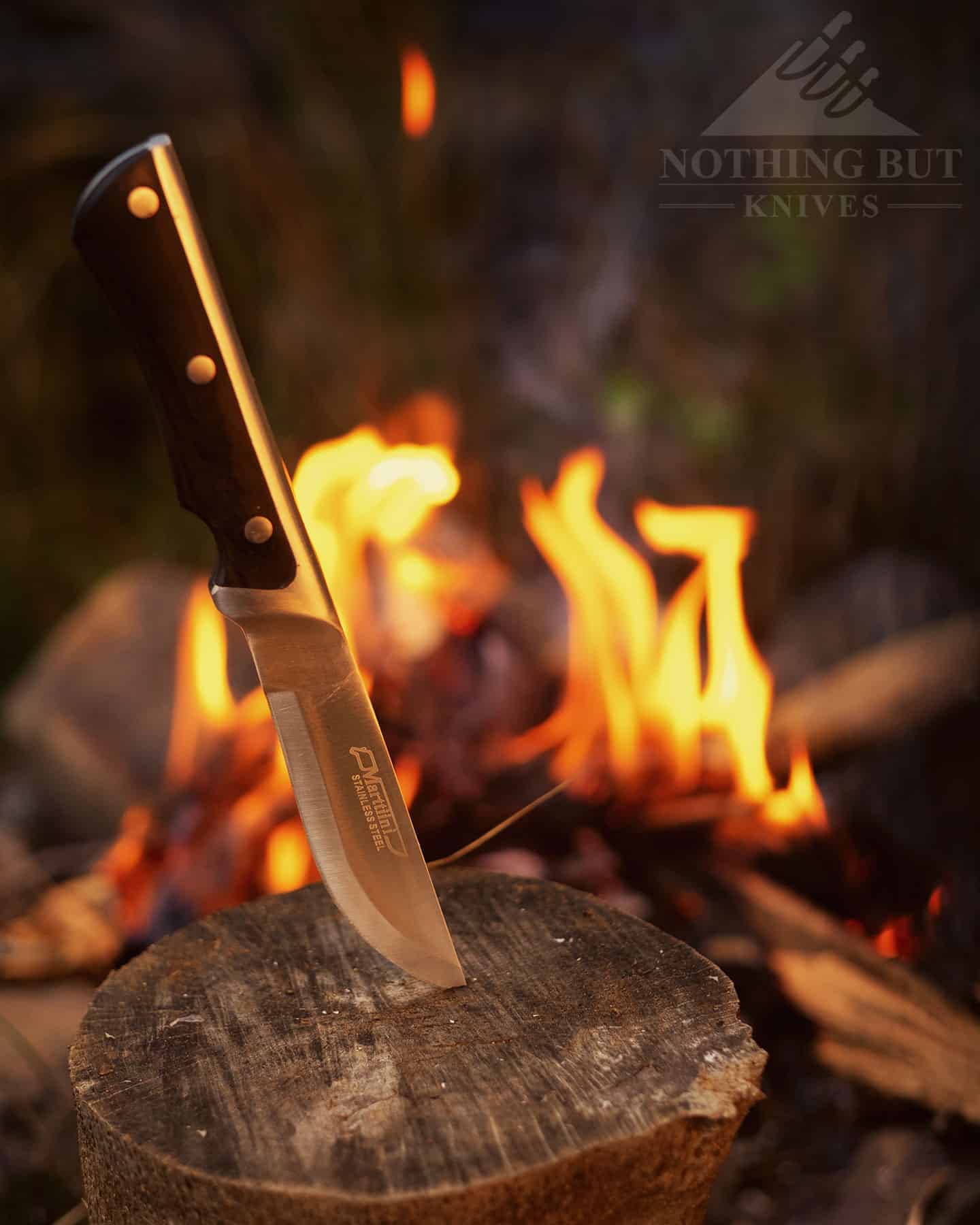
Marttiini does good work. One of their two full tang designs (as of this writing) is no exception. The blade is good for a dozen different survival tasks, the handle is comfortable, and it rides easy on the belt despite having a dangling sheath.
But in a world of good survival and hunting knives, the Marttiini Full Tang is worth picking up because it’s different while also being a little better than most options out there. The price tag doesn’t hurt it either, considering how much material is attached to this knife..
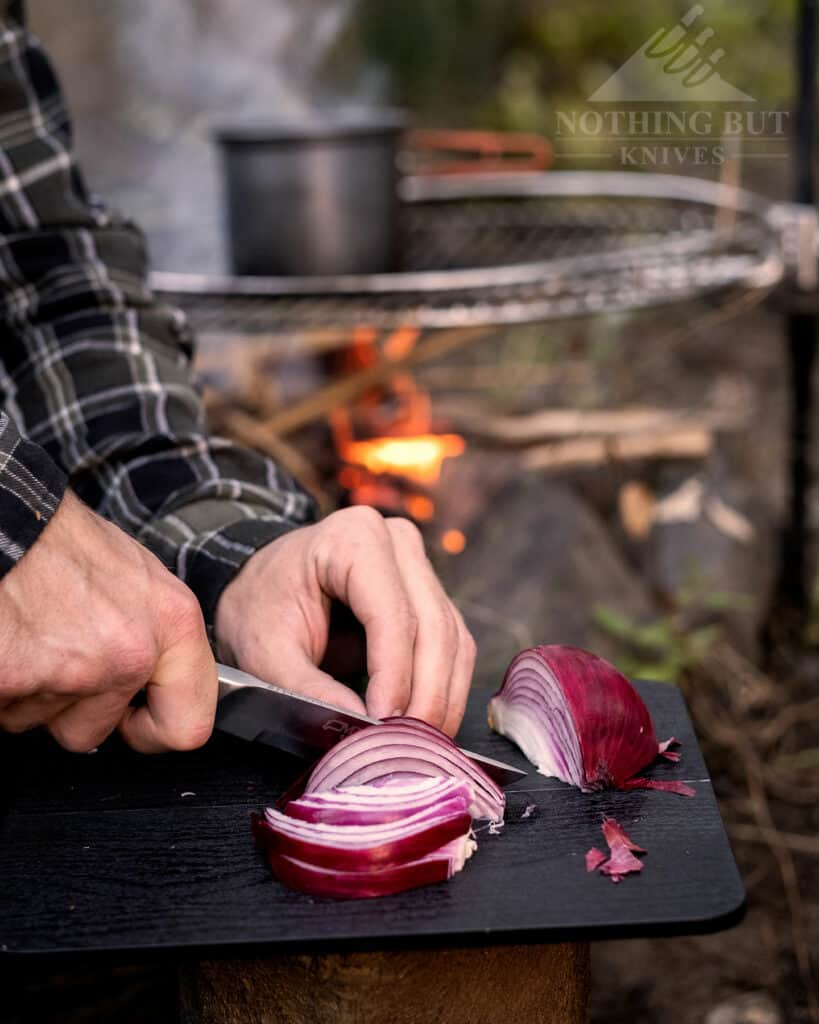
Obviously they could have done better with the name, and there are some rough marks that no one likes to see on a new knife, but even that lends to the impression that this knife is goal oriented. They built and overbuilt this thing to perform well in the bush, and by God they did a fine job of it.
Right now it is a little tough to find the Marttiini Full Tang in the United States. None of the big online retailers have it, but we ordered ours from Knives of The North, and at the time of this review they still had them in stock.

Great review for a knife for a brand that too many enthusiasts ignore !
About the steel it seems that the stainless used by Marttiini is 1.4034 steel, it is a classic Solingen steel combining edge retention and corrosion resistance. It is also easy to sharpen. This German steel has a hardness of 54-55 HRC. I knew it from my K55K Mercator folder, it’s a 420C steel, not too bad when properly heat treated.
Victorinox uses 1.4110 steel (very similar).
1.4110 : C 0.48 – 0.6 / Cr 13-15 / Si 1 / Mn 1 / P 0.04 / S 0.015 / Mo 0.5-0.6
1.4034 : C 0.42 – 0.5 / Cr 12.5-14.5 / Si 1 / Mn 1
Both of these steels are in the same range as 1.4116, 420HC, and 5Cr (or MoVa and AN-58 in Spain, who reach HRC of 58 with cryo a bit like Buck does with its 420HC).
So it’s very basic steel, low end class, but quite OK when properly heat treated like most of europeans brand do. It allows customers to buy solid knives at an affordable price.
Blessings from France !
Olivier
That sounds about right. My experience with it felt a lot like 420HC or 1.4116 at low hardness.
Thanks for the info, Olivier.